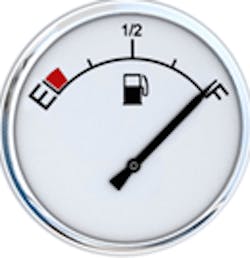With rising rates but tempered expectations, the ongoing freight recovery is unlike any previous cycle based on fleet responses to a new survey from GE Capital Transportation Finance.
Three-quarters of the fleets surveyed – a mix of truckload and LTL carriers – expect to see freight volumes and rates continue to increase in 2011 and 2012. And 90% expect to see the number of competitors in the market decrease or remain the same. Despite that positive environment, 57% of the surveyed fleets believe their profits will drop and operating ratios increase in 2011.
“The [expected] increase in operating ratio, even with rising pricing power, was a little surprising,” said Kirk Mann, the strategic initiatives manager for GE Cap’s transportation finance business. “In previous cycles, the hope was that you could overcome rising costs with pricing, but this cycle may be different. There’s just so much coming at them with rising fuel prices, driver pay pressures, higher equipment costs and new regulations that, at least in their minds, they don’t see how that will happen this time.”
Plans for replacement of aging equipment and fleet expansion also reveal a general sense of caution among carriers, according to the GE Cap survey.
“We currently have the oldest average fleet age on record, but only 50% said they expected their average [equipment] age to decline this year,” said Serena Tse, a sr. vp and transportation industry research manager for GE Capital. “The rest expect their average age to stay the same or actually increase” in 2011.
One significant difference turned up by the survey was in fleet expansion plans for carriers operating day cabs and those running longhaul tractors with sleepers. Despite “the overwhelmingly positive outlook about overall business conditions, only 26% actually expect to increase their day cab fleet,” Tse reported.
In contrast, 51% of longhaul carriers plan to buy new sleeper cab tractors this year. “I’d call them more optimistic, but not completely exuberant even though they’re expecting business to be better,” Mann said.
By 2012, however, both types of fleets indicated strong purchasing plans, with 68% of longhaul fleets and 33% of day-cab fleets intending to add power units. Combined, 70% of the surveyed fleets also anticipate buying new trailers next year.
Asked to identify the biggest challenges in 2011 and 2012, 67% identified rising diesel price and 47% were concerned about increased parts and maintenance costs for aging equipment. Operational costs of complying with new hours-of-service rules and reporting regulations were also concerns damping fleet enthusiasm for the improving business climate.
The single largest concern for the surveyed fleets was recruiting and retaining drivers. Seventy-four percent of respondents cited finding quality drivers as their single largest challenge this year and next. Surprisingly, while most said they expected the cost of driver pay and benefits to rise as a result, only 19% identified these increased wage costs as a top business challenge, according to Tse.
Reflecting the general fleet population of the U.S., the majority (59%) of the GE Cap survey respondents operate fleets of 25 to 249 Class 8 tractors. Twenty-five percent were from fleets of 250 to 499 tractors, 10% from fleets of 500 to 999 tractors, and 6% with 1,000 or more. With many respondents indicating multiple operations, dry van truckload was the most common fleet service (68%), followed by dedicated (48%), refrigerated (36%), flatbed (28%) and LTL (19%).
All individuals participating in the survey identified themselves as fleet owners or executives with chief officer or general management responsibilities.
About the Author
Jim Mele
Jim Mele is a former longtime editor-in-chief of FleetOwner. He joined the magazine in 1986 and served as chief editor from 1999 to 2017.
